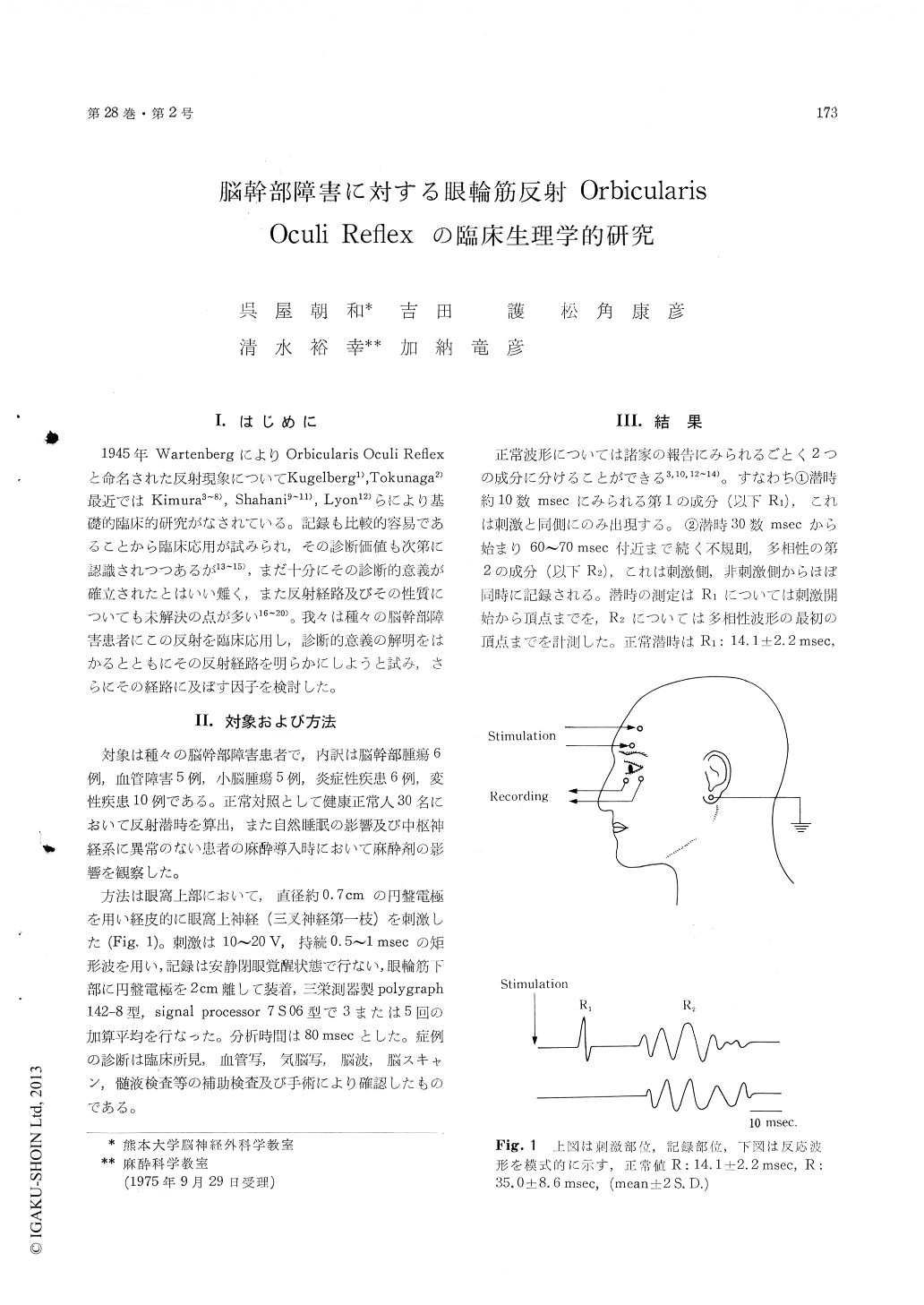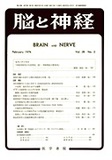Japanese
English
- 有料閲覧
- Abstract 文献概要
- 1ページ目 Look Inside
I.はじめに
1945年WartenbergによりOrbicularis Oculi Reflexと命名された反射現象についてKugelberg1),Tokunaga2)最近ではKimura3〜8),Shahani9〜11),Lyon12)らにより基礎的臨床的研究がなされている。記録も比較的容易であることから臨床応用が試みられ,その診断価値も次第に認識されつつあるが13〜15),まだ十分にその診断的意義が確立されたとはいい難く,また反射経路及びその性質についても未解決の点が多い16〜20)。我々は種々の脳幹部障害患者にこの反射を臨床応用し,診断的意義の解明をはかるとともにその反射経路を明らかにしようと試み,さらにその経路に及ぼす因子を検討した。
Orbicularis oculi reflex is consisted of two compo-nents; one is early reflex response (R1) which is14.1±2.2 msec in latency, and the other is latereflex response (R2) that is 35.0±8.6 msec in latency(mean±2SD). Ri is observed on the ipsilateral sideof stimulation and R2 is visible bilaterally on ipsi-and contralateral sides of stimulation. Clinicallyorbicularis oculi reflex can be recorded easily,however, its clinical and physiological significancehas not been clearly solved. Orbicularis oculi reflexwas tested on patients with the brain stem lesionsof various kinds, and the factors influencing to thereflex pathways were examined, such as the siteand the type of lesions, sleep, several anestheticsand the level of consciousness. Results obtainedwere as follows; 1) both R1 and R2 disappeared orprolonged in latencies by nuclear as well as periphe-ral facial nerve palsy, since the facial nerve wasthe final common pathway. 2) on cases of facialsensory disturbance Ri prolonged in latency withconcomitant delay of R2 response. 3) both Ri andwere attenuated as soon as the a rhythmicity ofthe EEG was disappeared. Administration ofthiamylal also attenuated both the R1 and R2,however, ketamine (a dissociative anesthetic) en-hanced the R1 in amplitude and suppressed R2.These findings indicated that the R1 and R2 werein some extent regulated from brain stem reticularformation and the orbicularis oculi reflex should bean useful diagnostic measure to detect impairedconsciousness. 4) also the reflex should be used toknow the extent of neoplastic process in the cerebel-lar hemisphere to the brain stem. 5) recovery curveof Ri from double shock stimuli (conditioned andtest) indicated that this reflex was different fromH wave of the spinal cord because of absent re-fractory period and shorter facilitatory period rang-ing between 40 to 60 msec.

Copyright © 1976, Igaku-Shoin Ltd. All rights reserved.


